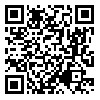Volume 15, Issue 9 (11-2015)
Modares Mechanical Engineering 2015, 15(9): 153-160 |
Back to browse issues page
Download citation:
BibTeX | RIS | EndNote | Medlars | ProCite | Reference Manager | RefWorks
Send citation to:



BibTeX | RIS | EndNote | Medlars | ProCite | Reference Manager | RefWorks
Send citation to:
Lirabi I, Amirabadi H. Multi-objective Modeling and Optimization of Hybrid Layered Manufacturing under Maximum Allowable Heat Constraint. Modares Mechanical Engineering 2015; 15 (9) :153-160
URL: http://mme.modares.ac.ir/article-15-859-en.html
URL: http://mme.modares.ac.ir/article-15-859-en.html
Abstract: (4232 Views)
Hybrid layered manufacturing is one of the key methods among rapid manufacturing techniques in which a layer of molten metal is deposited on the substrate and desired geometry is completed by stacking the layers. Inexpensiveness, high rates of deposition and great applicability are some of the characteristics of hybrid layered manufacturing. Welding and face milling are the two steps of the process. In welding phase, metal is built up by weld lines to cover a given surface and in milling phase weld beads are truncated to achieve a flat and integrated layer. The focus in this article is to optimize two contradictory objectives, namely reduction in machining volume and increase in deposition rate. Thus, the first task is to formulate the bead model considering the metal build-up effect. Then, the situation needed for achieving quasi-flat layers in welding phase is studied and the unified model is extracted. Moreover, GA is used to find optimum values for the proposed model based on heat and process constraints. Finally the model is verified and conclusions are drawn. This article presents a new criterion by defining the heat constraint for the multi-objective function. Results show that for the 0.8 mm wire ER70S6, optimum values are 8.6 m/min for wire speed and 0.6 m/min for torch speed that yield a deposition rate of 4224 mm3/min without violating heat constraint.
Keywords: Hybrid Layered Manufacturing, Weld Bead Modeling, Machining, Optimization, Heat constraint
Article Type: Research Article |
Subject:
Manufacturing Methods
Received: 2015/05/8 | Accepted: 2015/07/4 | Published: 2015/08/15
Received: 2015/05/8 | Accepted: 2015/07/4 | Published: 2015/08/15
| Rights and permissions | |
 |
This work is licensed under a Creative Commons Attribution-NonCommercial 4.0 International License. |







